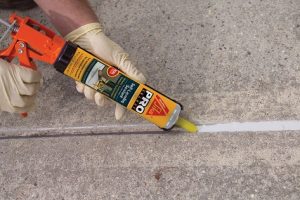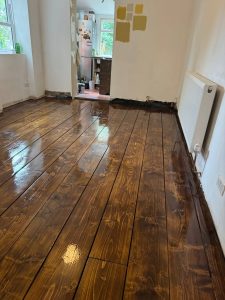How to Choose the Right Color Stain for Your Sanded Floors

Enhance the Beauty of Your Wooden Floors in Your London Home
Introduction
Choosing the right color stain for your sanded floors is a crucial decision that can transform the look and feel of your home. The right stain enhances the natural beauty of the wood, complements your interior design, and adds value to your property. This guide will help you choose the perfect color stain for your sanded floors in your London home.
1. Consider the Wood Type
The type of wood you have will influence how the stain color appears. Different woods absorb stains differently, resulting in varying shades and tones:
- Oak: Oak is versatile and takes stain well, offering a range of rich, deep colors.
- Maple: Maple has a tight grain and can be tricky to stain evenly. Lighter stains work best.
- Cherry: Cherry wood darkens naturally over time. Consider how the stain will interact with its aging process.
- Pine: Pine can have a blotchy appearance when stained. Using a pre-stain conditioner can help achieve a more uniform look.
2. Assess Your Interior Style
Your choice of stain should complement your home’s overall interior design. Consider the following styles:
- Modern: Opt for darker stains like espresso or grey to create a sleek, contemporary look.
- Traditional: Rich, warm stains like mahogany or walnut add a classic, timeless appeal.
- Rustic: Lighter, natural stains like honey or chestnut enhance a cozy, rustic atmosphere.
- Scandinavian: Light, neutral stains like white oak or natural pine create an airy, minimalist feel.
3. Test Samples
Always test stain samples on a small, inconspicuous area of your floor before committing to a color. This allows you to see how the stain looks in your space and under your lighting conditions. Here’s how to test stains effectively:
- Prepare the Surface: Sand the test area thoroughly to ensure it matches the rest of the floor.
- Apply the Stain: Use a brush or cloth to apply the stain, following the manufacturer’s instructions.
- Evaluate the Color: Assess the color once the stain is dry. Consider how it looks during different times of the day and in various lighting conditions.
4. Think About Maintenance

Darker stains can show dust, scratches, and dents more easily than lighter stains. Consider your lifestyle and how much maintenance you are willing to perform:
- High Traffic Areas: Choose a stain that can withstand heavy use and is easy to touch up if needed.
- Low Traffic Areas: You can opt for more delicate or lighter stains in areas that receive less foot traffic.
5. Consult a Professional
If you’re unsure about which stain to choose, consult a professional floor sanding and staining service. They can provide expert advice based on your specific wood type, interior design, and maintenance preferences. Professionals can also apply the stain evenly and achieve the best possible finish.
Conclusion
Choosing the right color stain for your sanded floors is an important decision that can enhance the beauty and value of your home. By considering the wood type, your interior style, testing samples, thinking about maintenance, and consulting professionals, you can achieve the perfect look for your floors. For expert floor sanding and staining services in London, contact us today. Let us help you transform your wooden floors with our professional expertise.







The Pros and Cons of Matte vs. Gloss Finishes
The Pros and Cons of Matte vs. Gloss Finishes Choosing the right finish for[Read more...]
Engineered Wood Flooring
Choosing the finishes for your house can be the most exciting part. Wood flooring adds[Read more...]
Sep
Floor sanding and renovation and installation services in Essex
Essex: A County of Charm and Diversity Essex is a historic and picturesque county located[Read more...]
Floor Board Fitting
Installing, Fitting, sanding and finishing different types of flooring takes a lot of work. when[Read more...]
Sep
How to Sand Floors in Small Spaces: Tips and Tricks
How to Sand Floors in Small Spaces: Tips and Tricks Sanding floors in[Read more...]
Floor sanding and renovation and installation services in Putney
Putney: A Riverside Gem in Southwest London Putney is a charming and affluent district located[Read more...]
The Benefits of Refinishing Over Replacing Your Floors
The Benefits of Refinishing Over Replacing Your Floors Why refinishing is a cost-effective[Read more...]
Floor sanding and renovation and installation services in London
Revitalize Your Floors with Expert Sanding Services in London London, the bustling capital of the[Read more...]
How to Handle Stains and Imperfections Before Sanding
Achieve the Best Results for Your London Home Introduction Sanding wooden floors is a[Read more...]
Floor sanding and renovation and installation services in Lewisham
**Lewisham: A Thriving South London Community** Lewisham is a diverse and dynamic area in southeast[Read more...]